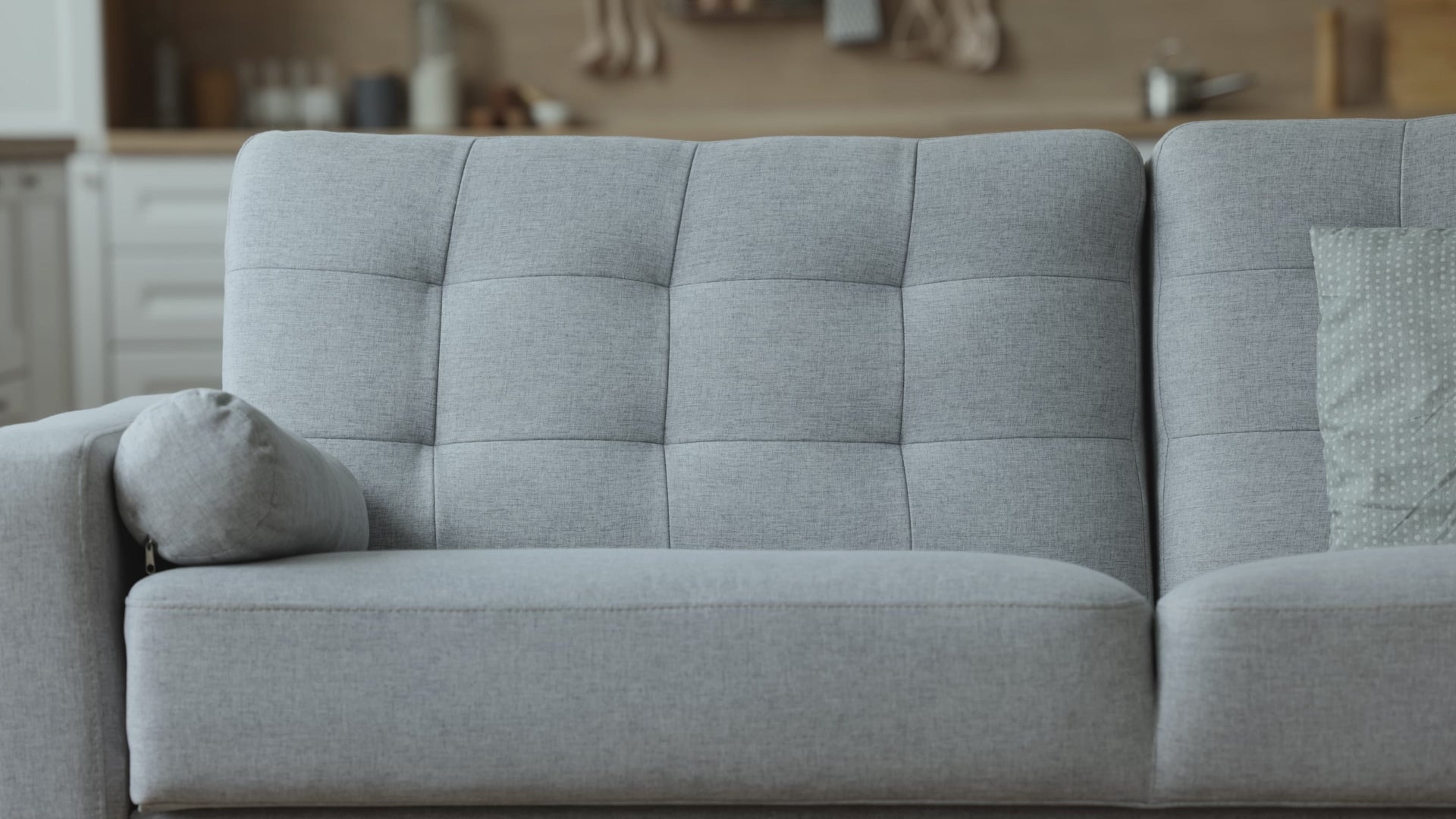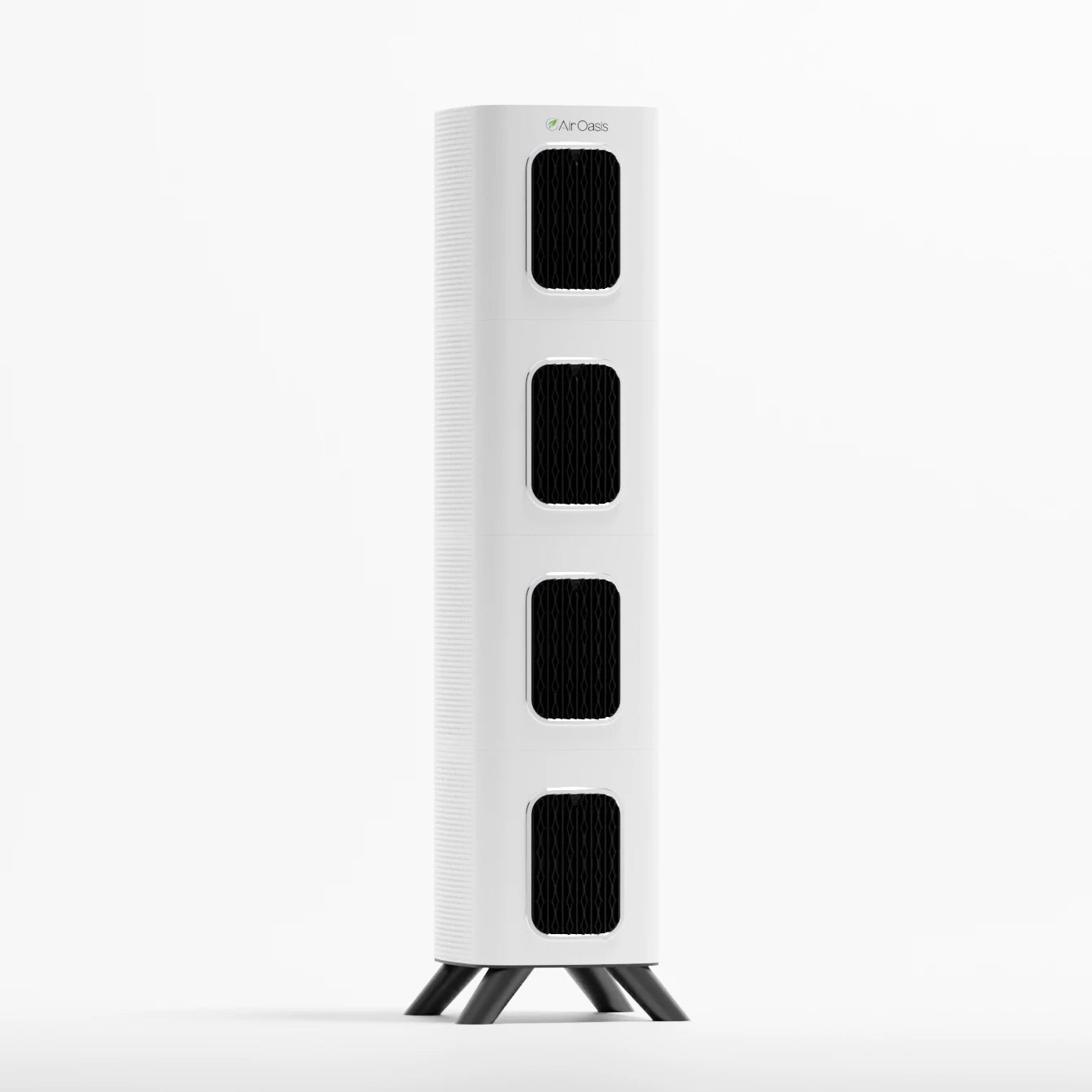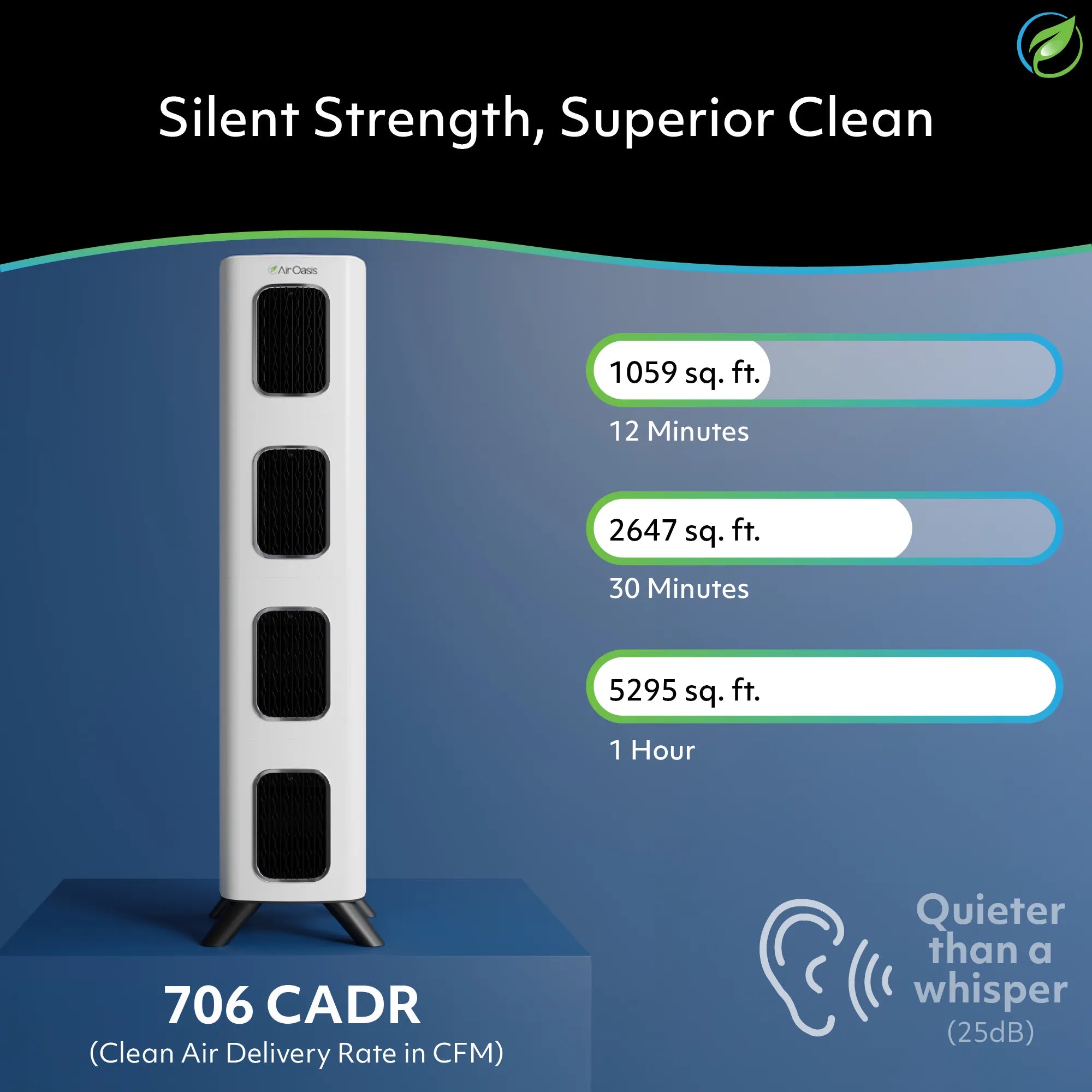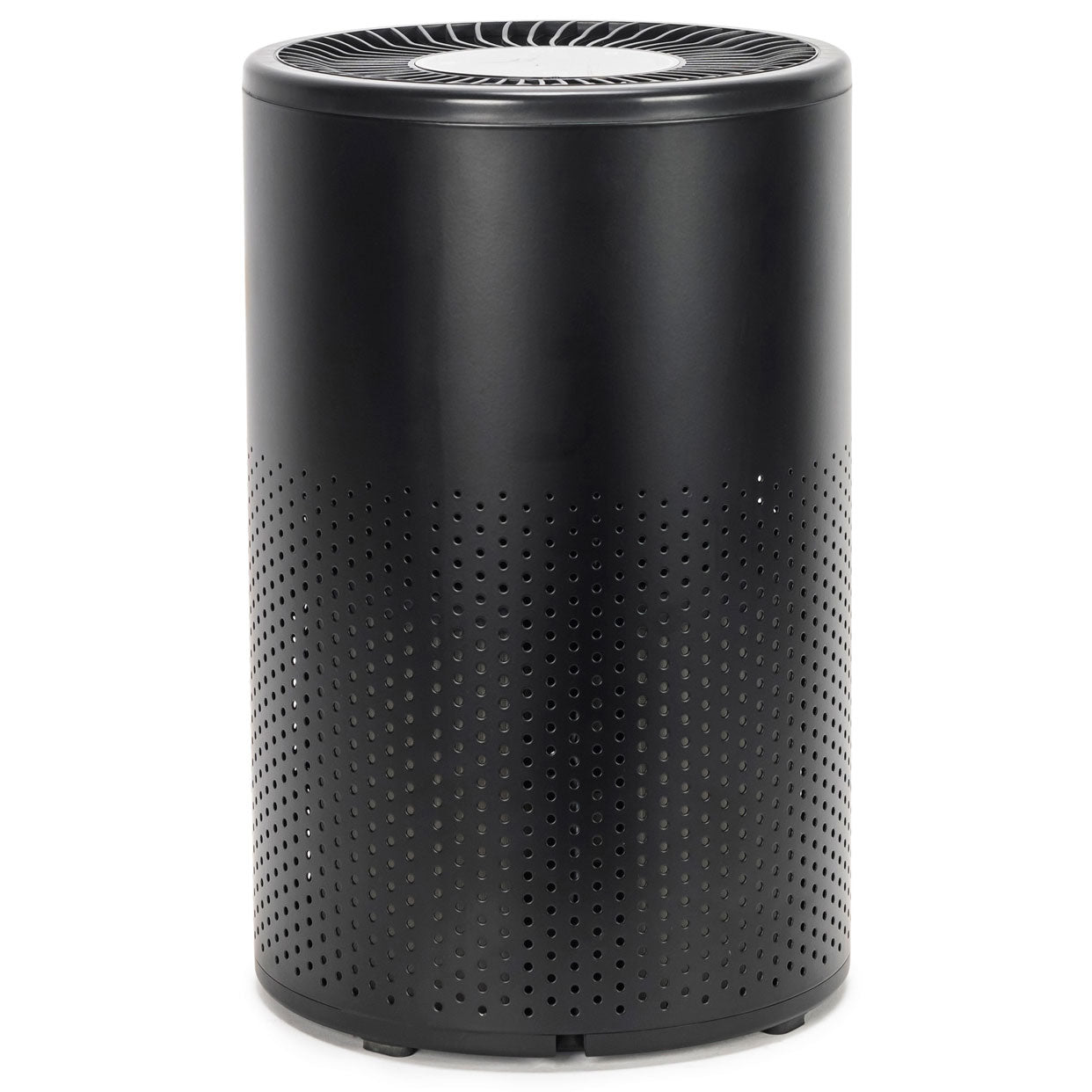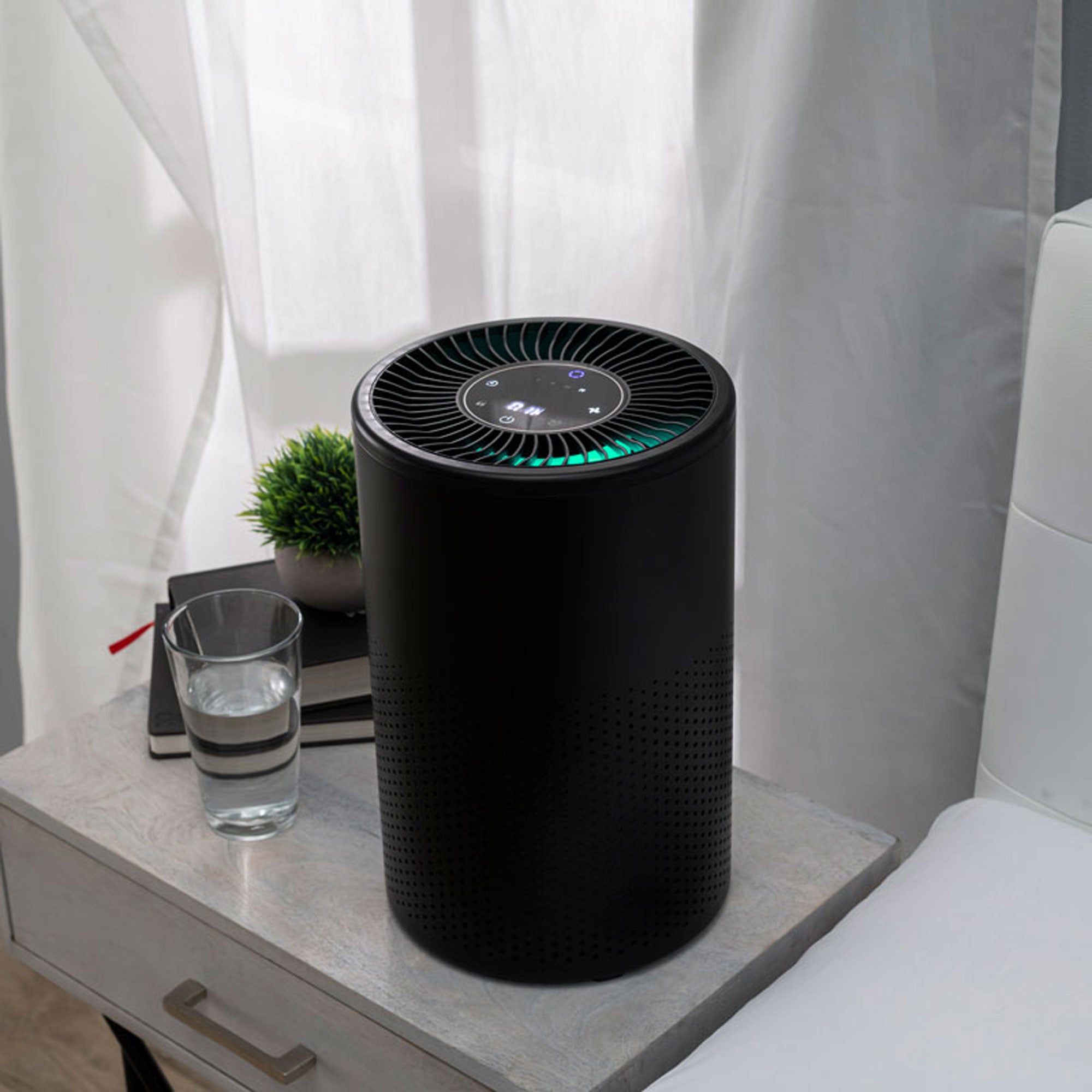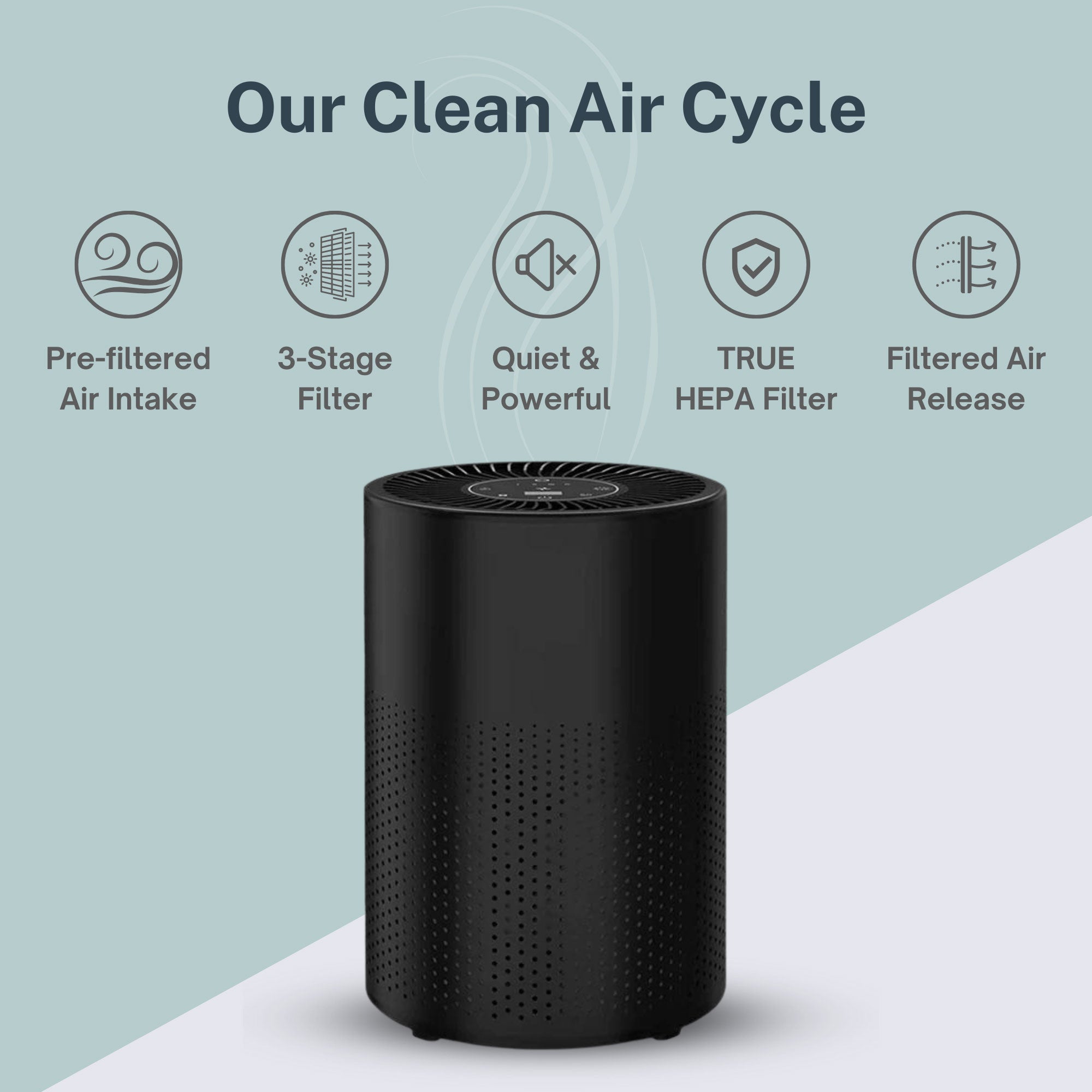Let’s face it—you spend a lot of time at home.
Working, cooking, sleeping, relaxing, the list goes on and on.
And you want that time to be as enjoyable as possible.
Clean air is a huge part of that equation.
If you want to breathe the cleanest air possible in your space, you may have considered a whole home air purification system. But what does this entail? And is it the most effective way to achieve optimal indoor air quality at home?
Let’s find out!
What is a Whole House Air Purifier?
A whole-house air purifier is an advanced air cleaning system integrated directly into your home's HVAC (Heating, Ventilation, and Air Conditioning).
Unlike a standalone portable air purifier that targets specific areas and has varying square footage-based capacity, whole-house purifiers work to improve air quality throughout your entire living space.
How Whole House Air Purifiers Work
All air purifying systems operate similarly—filtering forced air.
Here’s a look at what that means for a central air purification system.
- Integration with HVAC: The purifier is installed in-line with your existing residential HVAC system.
- Continuous Operation: Whenever your HVAC system runs, the air purifier actively cleans the air circulating through your home.
- Comprehensive Filtration: As air flows through your ductwork, the purifier traps or neutralizes a wide range of contaminants, including:
- Dust and pollen
- Volatile Organic Compounds (VOCs)
- Allergens
- Other harmful airborne particles
- Circulation Process: This typically happens in four stages. First, air enters your home’s vents and passes through the HVAC system and the subsequent air purifier filters. The contaminants are removed or neutralized, and then clean air is distributed back into your living spaces.
Is a Central Air Purifier the Same as an HVAC Filter?
No; a central air purifier and an HVAC filter aren’t the same, as they each bring something distinct to the table. Let’s take a closer look at the differences and how combining these technologies can improve your overall indoor air quality.
HVAC Filters
HVAC filters are mesh filters installed in your HVAC and furnace. Their core purpose is to trap large particles like dust. It’s easy to forget these filters exist until months pass and you pull out a sheet thickly crusted with dust.
That's your standard HVAC filter doing its job, but it's only scratching the surface of air purification.
What HVAC Filters Do:
- Trap large particles like dust, lint, and pet hair
- Protect your HVAC system from debris
- Require replacement every 1-3 months
What They Don't Do:
- Remove smaller, harmful particles
- Eliminate odors or gases
- Actively purify the air
Central Air Purifier Filtration
Central air purifiers filter the air in your entire space and use advanced air cleaning (not just filtration) technologies to do so.
What Central Air Purifiers Do:
- Filter out microscopic particles (as small as 0.3 microns with a HEPA filter)
- Remove allergens, bacteria, and viruses
- Neutralize odors and harmful gases
- Use advanced technologies like HEPA filters, UV light, or bi-polar ionization
What They Don't Do:
- Replace the need for regular HVAC maintenance
- Eliminate the need for proper ventilation
- Solve underlying air quality issues like mold growth in your home or gas leaks
While both your HVAC/air conditioner filter and a central air purifier play a part in reducing indoor air pollution, the latter offers a deep clean that removes small particles that can cause allergies, irritation, and other adverse effects.
What Are The Features of the Best Whole Home Air Purifiers?
Central air purifiers are a powerful way to improve your home's indoor air quality. Several key features contribute to the effectiveness of a whole-home air purification system.
HVAC Integration
If you’re going to have a whole-home air purification system, it should be installed directly into your HVAC system for a comprehensive cleaning approach. That’s because whenever your HVAC system runs to heat or cool your home, the air purification system simultaneously operates, cleaning the air in every room.
Added HVAC Filtration
Earlier, we talked about the difference between HVAC filters and air purification systems. But combining your central air purifier with a more advanced and efficient HVAC filter can take your cleaning to the next level.
In general, filters are rated using the MERV (Minimum Efficiency Reporting Value) scale, which ranges from 1 to 20. A higher MERV rating indicates a more effective filter capable of trapping smaller particles.
- MERV 1-4: Basic filtration for large particles
- MERV 5-8: Medium filtration for smaller particles like mold spores
- MERV 9-12: Superior filtration for very fine particles
- MERV 13-16: Hospital-grade filtration for microscopic particles
Pairing a high-MERV filter with your HVAC system complements the air purifier's function, providing an additional layer of air cleaning.
Bipolar Ionization Technology
Some whole home air filtration systems use bipolar ionization for enhanced cleaning effects. Bipolar ionization is an advanced air purification method that has gained popularity in recent years. This technology generates positive and negative ions, which are released into the air.
Here's why it's important:
- Particle Agglomeration: The ions attach to airborne particles, causing them to cluster together and become larger. This makes it easier for filters to capture them.
- Pathogen Neutralization: The ions can disrupt the surface proteins of viruses and bacteria, potentially rendering them inactive.
- VOC Reduction: Bipolar ionization can help break down volatile organic compounds (VOCs), reducing odors and harmful chemicals in the air.
- Continuous Protection: As the ions are distributed throughout your home, they provide ongoing air purification, even in areas far from the HVAC unit.
Bipolar ionization is particularly effective against particulate matter, a dangerous type of air pollution that can come from various sources, including fields, fires, roads, and construction sites. By incorporating this technology, whole-home air purifiers can offer superior protection against a wide range of airborne contaminants, including viruses, bacteria, mold, allergens, and odors.
When selecting a whole-home air purifier with bipolar ionization, it's important to choose a system that is certified ozone-free (look for UL 2998 certification or CARB certification) to ensure safety and effectiveness.
By combining these features—HVAC integration, high-MERV filtration, and bipolar ionization technology—whole-home air purifiers can provide comprehensive, efficient, and continuous air cleaning throughout your entire living space.
The Pros and Cons of Whole Home Air Purification Systems
When considering a whole home air purification system, it's important to weigh the advantages and disadvantages. Here's an overview of the pros and cons:
Pros of Central Air Purifiers
Whole home air purification systems have a lot of advantages. Let’s take a look at a few.
- Comprehensive Air Cleaning
- Whole home systems can remove many contaminants, including dust, pollen, pet dander, and even some bacteria and viruses, which can be beneficial for people with severe allergies and asthma concerns. They work throughout the entire house, providing consistent air quality in every room.
- Potential Health Benefits
- Depending on the filtration levels and technologies used, these systems may reduce symptoms for individuals with allergies, asthma, and other respiratory conditions by decreasing the concentration of indoor air pollutants.
- Convenience
- This system is integrated with the HVAC system, requiring no additional floor space or management of multiple portable units. As it’s one system, there also tends to be less ongoing maintenance, like filter changes, fan settings, and overall operations when compared to portable units.
- Quiet Operation
- Though many portable units are quiet enough to sleep comfortably, generally, central air purification systems operate more quietly than portable units, as they're integrated into the existing HVAC system.
Cons of Central Air Purifiers
But these systems aren’t without their drawbacks.
- High Initial Cost
- Whole home systems typically have a higher upfront cost compared to portable air purifiers, with some installation quotes coming in at about $5,000. These installation costs can be significant, especially if modifications to the existing HVAC system are required.
- Professional Installation Required
- Unlike portable units that you can start using right out of the box, whole home systems usually need professional installation, adding to the overall cost, time, and complexity.
- Potential Energy Efficiency Concerns
- These systems may lead to increased energy usage, particularly with higher MERV-rated filters that can make the HVAC system work harder.
- Not Suitable for All Homes
- Some HVAC systems may not be compatible with certain whole-home air purifiers, limiting options for some homeowners.
- Maintenance Considerations
- While less frequent than portable units, filter replacements, and system maintenance can still be costly over time.
- Effectiveness Varies
- The efficiency of the system can depend on factors like home size, HVAC system capacity, and local air quality conditions
When considering a whole home air purification system, it's essential to assess your specific needs, budget, and home setup. Consulting with HVAC professionals can help determine if such a system is suitable for your particular situation.
Whole Home Air Purifiers vs. Portable Air Purifiers
It’s important to note that HVAC filters can only operate effectively (that is to say, filter) the air when the system is operating.
And most HVAC systems just run when needed to heat or cool the home and maintain an optimum temperature.
To maximize indoor air quality at any time, you may want to turn to portable air filters that run as needed on-demand, especially in high-traffic rooms like living rooms, kitchens, and bedrooms.
Let’s take a closer look at the differences between these air purification approaches.
|
Whole House Purifiers |
Portable Purifiers |
|
Clean air throughout the entire home |
Target specific rooms or areas |
|
Integrated with HVAC system |
Standalone units |
|
Only active when HVAC system is running |
Can be active at any time regardless of the HVAC system |
|
Due to the HVAC integration, there’s a lack of customization |
Can customize fan speed, purifier size, and operating times depending on daily use and changing needs |
|
Typically higher initial cost, lower long-term operating cost |
Lower initial cost, but may have higher long-term operating costs, like replacement filters |
Achieve Whole Home Clean Air with Air Oasis
At the end of the day, you want the best indoor air quality possible. And there are several avenues for you to do that.
Whole home air purifiers are one route. While the convenience of a whole-home approach is attractive, a lot of pieces have to fall into place to make them as effective as possible, including the combination of filtration, air cleaning technologies, your current HVAC system, ductwork set up, and more.
Targeting each room with a portable air purifier allows you to customize the air purification to your needs. For example, you can control when and how strong the fan speed operates based on your routine or set it up on a timer to adhere to your preferences automatically.
When looking for the best air purification system for your home, consider:
- The type of filters used, including a HEPA filter, activated carbon filter, and silver microbial filter
- Advanced cleaning technologies like bipolar ionization
- Room size
- Daily activity and cleaning needs
The Air Oasis suite of iAdaptAir 2.0 air purifiers can help you achieve better indoor air quality throughout your home. Shop the line today.










